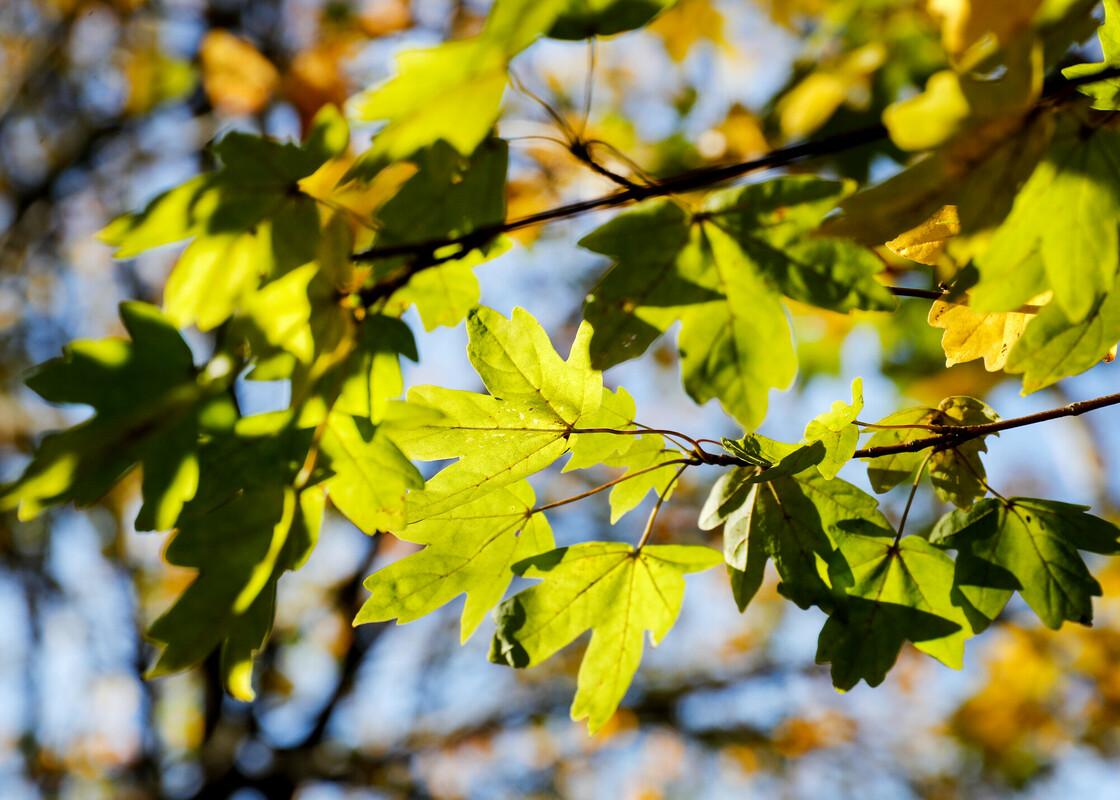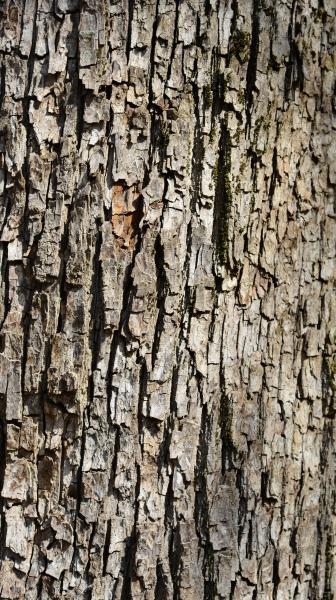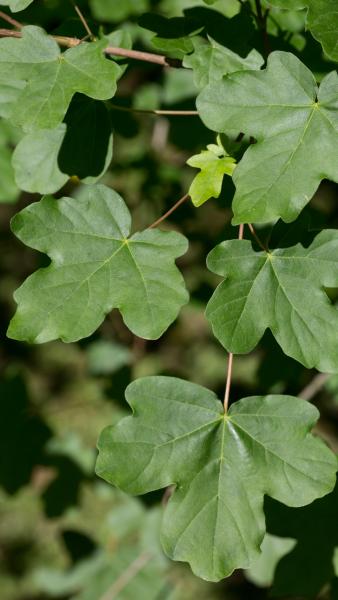
Species Name: Acer campestre
Known for their broad leaves and sweet syrup, maple trees grow all over the world and come in many shapes and sizes. The field maple is the UK’s only true native maple – and it grows right here in the Heart of England Forest! These trees can grow up to 20m tall and live up to 350 years.
The bark is light brown with vertical flaky fissures and the thin twigs become corky as the tree ages. Leaf buds grow on long stems and are grey in colour.

The leaves have five rounded lobes and are dark green and glossy. In the autumn, the leaves turn yellow, then orange, then red, before falling off in the winter. The field maple’s spectacular colours make it the star of the show in autumn.

The field maple produces flowers with both male and female reproductive parts. The flowers are tiny, yellow-green, and grow in clusters. Once the flowers have been pollinated, they develop into large, winged seed pods. The wings of the seed pod are straight, unlike the sycamore's which are V-shaped.

The field maple can be found in many woodland areas of the UK, commonly in hedgerows. They are often planted in gardens and parks due to their pollution-tolerant nature and beautiful autumn colours.
According to folklore, carrying a child around a field maple or passing them through its branches will grant the child long life and remove any traces of witchcraft.
It is also said that field maples protected nearby houses from bats, which were traditionally perceived as a bad omen.
All maple trees produce sap that can be made into syrup, this includes the field maple. Trees are tapped early in the year, when the nights are cold and the days are sunny, to extract the sweet sap. Field maple has the hardest wood of all European maple trees. Because of this, it is traditionally used for carving and making musical instruments.
Field maple trees attract aphids, and with aphids come their predators - many species of ladybird, hoverfly, and small birds. Moth larvae feed on the leaves, flowers provide pollen and nectar for bees and other flying insects, and birds and small mammals eat the seeds.
Field maple leaves produce honeydew, which attracts hairstreak butterflies.
3% of the trees we are planting in the Forest this season are field maple trees.




